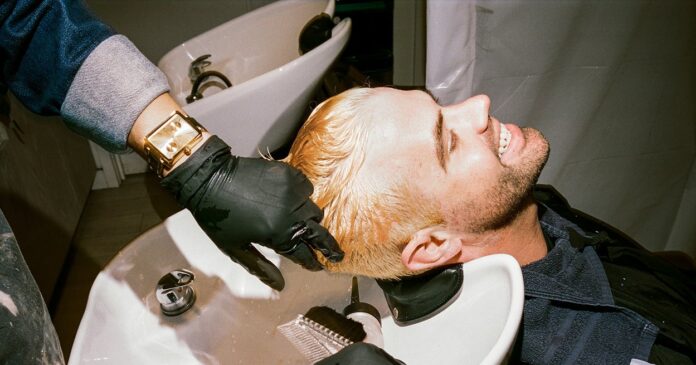
Concannon, who previously held positions at the English colleges of Royal Holloway and Goldsmiths, published a paper in July that explored why mental illness had endured among gay men despite social progress. Drawing on research from others, Concannon points to a destructive competitiveness within the gay community and its various subcultures, each of which prizes different forms of capital to determine one’s status. Most obviously, that includes one’s physique and appearance — the emphasis on which has only worsened, Concannon believes, because of social media — but it can also include things like race, income, and even HIV status. He notes one American gay man who was quoted in a 2017 HuffPost piece on gay loneliness: “The bullied kids of our youth grew up and became bullies themselves.”
Concannon, 61, experienced the pressure of one of these forms of social currency — age — during a seven-year period, from 2011 to 2018, that he spent living in Sitges, Spain.
Surrounded by young, tanned surfers, he was called fat and old on more than one occasion. So he did something to his hair that sounded pretty familiar: “I dyed it blonde — oh god — to fit in, I suppose, to look younger, to not be one of those old creepy men that you see in the corner of the gay bar,” he told me.
Aging as a gay man can be different than as a heterosexual man, both Concannon and Levounis believe. Many queer people experience something of a delayed adolescence if they weren’t out when they were younger that might be full of sex and queer joy, but as they do age, the emphasis on appearance in large parts of the community can cause crises in self-esteem and body image.
“For me, when I aged, I had nothing to gauge it against,” Concannon told me. “So I have no children. I’m at the age now where I should have grandchildren. And in my head, I’m still ready to party.
“So it’s a really difficult thing to meet head-on,” he added. “In the sense that as you age you still feel young and great to go out, and it’s when you go out and you get comments about age or weight or something like that, then you suddenly realize.”
For Levounis, 60, his thoughts on aging began to change in 2012 after therapist and writer Bob Bergeron died by suicide. The 49-year-old author of a self-help guide, The Right Side of Forty: The Complete Guide to Happiness for Gay Men at Midlife and Beyond, Bergeron had left a suicide note in which he’d drawn an arrow to the book’s title and called it a lie.
“That really stopped a lot of us in our tracks,” Levounis recalled, “and we said, ‘Are you serious? Is that for real? Do we really take our own lives because we’re not quite as young as we used to be?’
“I think a lot of us have evaluated this whole thing about aging. Back in my 20s, it was a boogeyman that one day you’re going to grow old and nobody’s going to look at you and you’re going to be just so unattractive just because you’re old. That has changed, and I’m absolutely glad it has,” Levounis said.
Maybe my urge to dye my hair really was as simple as being a gay man who had entered his mid-30s. It might just have been, as Levounis suggested to me during our non-therapy session, that I wanted to belong in a crowd of people that I was attracted to. I associated blondeness with youth and sex and fun, all of which sounded great after what felt like an eternity locked in my apartment. But truthfully, I was also thinking differently about my future.
After my niece was born last year, I had found myself suddenly wondering whether I wanted kids and if I could be happy if I were just the fun uncle. For the first time in my life, the answer felt more like yes, I could be. It was a small but radical shift in how I thought about what my life would be like as I aged, and I felt comfortable with it.
So why was I about to do something that appeared to be a cry for help?
Going blonde felt like an opportunity to scorch both the earth and my scalp. After a tough few years, I could reinvent myself without the cost of a therapist. After all, if our hair is one of the chief elements of how we present ourselves to the world, a drastic change can feel like the easiest way to transform how others see us — and how we see ourselves.
“Sometimes getting a haircut is kind of manifesting your ideal version of yourself,” student Molly Glick told Northwestern University’s daily online magazine for a 2020 piece on LGBTQ students and their expressive hairstyles. “You’re seeing it out in the world.”
So earlier this month — on National Coming Out Day, no less — I arrived at a salon in downtown Manhattan where I sat for about 90 minutes as a patient stylist walked me through each step of the bleaching and toning process as they stripped the pigment from my hair, in a procedure that slowly transformed it from brown to orange to blonde.
When it was over, the photographer who accompanied me for this story said the best thing possible: “You look younger!”







